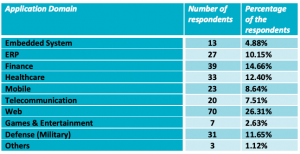Discover six powerful techniques to revamp your software development process and take your business to the next level. Learn how to optimise your workflow, increase collaboration, and produce higher quality software.
Software development is a constantly evolving field that requires businesses to adapt to new trends and technologies in order to stay competitive. As a software development company, we understand the importance of staying ahead of the curve and constantly improving our development process to deliver the best possible results for our clients.
In this article, we will explore 6 powerful techniques that can help you revamp your software development process and achieve better outcomes for your projects. From optimising your workflow to enhancing collaboration, these techniques are designed to streamline your development process, improve communication, and produce higher quality software.
Frequent Difficulties encountered in the Software Development Process
Before we delve into the techniques, it’s essential to identify some of the common problems that can arise during the software development process. Here are some obstacles you may face when aiming for great software development results:
- Ignoring the customer’s needs:
The requirement gathering phase within a software development project is crucial in defining software requirements. Involving the end-user throughout the development process can ensure meeting their expectations and avoiding unnecessary revisions.
- Sudden changes asked by the stakeholder:
Requests for specific features can result in complex processes and changes in estimations, deliverables, and budgets. Identify all stakeholders’ requirements in the early stages to consider all variables that may appear along the way.
- Lack of time to test:
Testing is key to detecting security issues in advance and improving the quality of software. Allocate adequate time to the team for testing to avoid potential issues.
6 Powerful Techniques for Software Development Process
1. Define Your Process
The first step to improving your software development process is to define it clearly. You need to understand the different stages of the process, the roles and responsibilities of each team member, the tools and technologies you will use, and the goals and objectives you want to achieve. By defining your process, you can establish clear guidelines and expectations, minimise confusion and misunderstandings, and ensure that everyone is aligned and working towards the same goal.
2. Embrace Agile Development
Agile development is a software development methodology that emphasises flexibility and collaboration among team members. By using Agile development, you can respond quickly to changing customer needs and market demands, resulting in faster development cycles and higher-quality products. Here are some ways to embrace Agile development:
Use Sprints
Sprints are short, focused periods of development that typically last two to four weeks. By breaking the development process down into smaller, more manageable chunks, you can ensure that your team is making progress and meeting deadlines.
Hold Daily Stand-Up Meetings
Daily stand-up meetings are brief, 15-minute meetings where team members discuss their progress and any obstacles they may be facing. These meetings keep everyone on the same page and help to identify and address issues early on.
3. Take Advantage of Automation
Automation is key to optimising any software development process. In fact, it is one of the most effective techniques to enhance productivity, speed up development time, and reduce costs. By automating routine tasks and repetitive processes, developers can focus on more complex and creative tasks, and thus improve the quality of the software.
Continuous integration and delivery (CI/CD) is a software development practice that involves merging code changes into a shared repository and testing them automatically. Here are some ways to implement CI/CD:
Automate Testing
Automated testing allows you to quickly and easily test your software for bugs and errors. By automating your testing process, you can catch issues early on and fix them before they become major problems.
Use Continuous Deployment
Continuous deployment involves automatically deploying code changes to production as soon as they pass testing. This approach helps to reduce the time between code changes and releases, resulting in faster time-to-market and more frequent releases.
Another way to automate your software development process is by using software development frameworks and libraries. These frameworks provide a set of pre-built components and tools that can be used to develop software applications faster and more efficiently.
4. Implement DevOps Practices
DevOps is a set of practices that combines software development (Dev) and IT operations (Ops) to create a more streamlined and efficient software development process. DevOps practices focus on collaboration, automation, and continuous improvement, and aim to bridge the gap between development and operations teams.
By implementing DevOps practices, software development teams can reduce the time it takes to deploy new features and updates, increase the stability and reliability of their software applications, and improve communication and collaboration between team members.
5. Use Code Review and Pair Programming
Code review and pair programming are techniques that involve having multiple people review and collaborate on code. This can lead to higher-quality code, fewer bugs, and greater knowledge sharing. To implement code review and pair programming, consider the following techniques:
Pull Requests
Pull requests are a technique that involves creating a request for someone else to review and merge your code changes. This allows for greater collaboration and can help catch errors before they make it to production.
Pair Programming
Pair programming is a technique that involves two people working together on the same code. This can lead to higher-quality code, greater knowledge sharing, and improved communication.
6. Foster a Culture of Continuous Improvement
Last but not least, one of the most effective techniques to improve your software development process is to foster a culture of continuous improvement. This means encouraging team members to identify areas for improvement, experiment with new tools and techniques, and learn from their successes and failures.
By creating a culture of continuous improvement, software development teams can continuously enhance their processes, optimise their workflows, and deliver high-quality software that meets the needs of their customers.
Take a look at this article: https://wonderit.io/the-crucial-role-of-software-testing/
Insights from a 2011 Web Survey: The Benefit of Automated Testing
In 2011, a web survey was conducted in Sweden, which received 164 responses from around the world. After analysis, 115 (70.12%) responses were determined to be valid. The picture provides information on the distribution of respondents based on their roles. It is evident that half of the respondents are testers, indicating that the data is largely based on their experiences.

Picture 1: Percentage of respondents distributed based on the role
Among the respondents working in the software application domain, the highest percentage (26.31%) are involved in web applications, followed by finance (14.66%), healthcare (12.40%), defence (11.65%), ERP applications (10.15%), and telecommunications (7.51%).

Picture 2: Number of respondents for survey working on different application domains
A significant majority of the respondents (75%) fully agree or agree that Automated Testing can enhance product quality through better test coverage, with few disagreeing. About 18% are uncertain about this benefit. These results indicate that practitioners are well aware of this advantage. Previous case studies, such as those conducted by K. Karhu in a systematic literature review, also supported the notion that better testing coverage can improve product quality.

Picture 3: Automated testing can improve the product quality by better test coverage
Automated software testing saves time and cost as it can be re-run again and again and they are much quicker than manual testing.
Read more here: Automated Testing Research
Final words
Revamping your software development process is not an easy task, but it is essential for staying competitive in today’s fast-paced digital world. By implementing these powerful techniques, you can optimise your software development process, improve productivity, reduce costs, and deliver high-quality software that meets the needs of your customers.
At WonderIT, we specialise in software development services and can help you revamp your software development process to ensure that you stay ahead of the curve. Contact us today to learn more about our services and how we can help you achieve your software development goals.
FAQs
Q: How can I implement these techniques in my organisation?
A: Implementing these techniques requires a commitment to change and a willingness to adapt your existing processes. Start by identifying areas where your development process could be improved, and then work with your team to implement new techniques and workflows.
Q: How long does it take to revamp the software development process?
A: The time required to revamp the software development process depends on the size and complexity of the project. However, implementing the above techniques can help reduce the time and effort required to deliver high-quality software products.


Recent Comments